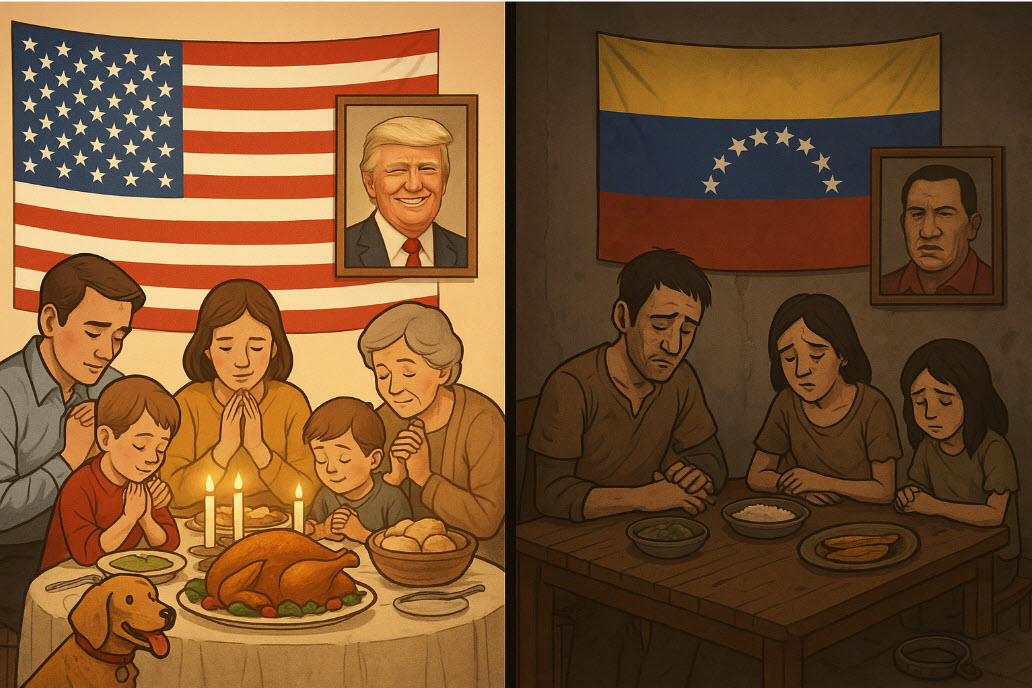In recent decades, many people fleeing failed or authoritarian regimes have arrived in the United States from nations shaped by Marxist, Neo-Marxist, or Socialist-Influenced ideologies.
Unfortunately, these emigrants, many of them industrious, intelligent individuals, have found themselves in our nation, which is under attack by the same Marxist-influenced ideologies.
While terms like “socialism” are often thrown around carelessly—particularly by media and academics—it is important to understand their actual meanings and consequences.
Labeling Venezuela, Cuba, or the former Soviet Union as merely “socialist” flattens the stark and often tragic realities faced by those living under revolutionary leftist systems.
This essay aims to define and distinguish these leftist ideological categories clearly and list the nations that have implemented them. The differences matter—not just as a matter of theory but as a reflection of the lived experience of millions.
We must not conflate the Scandinavian model of democratic capitalism with robust welfare policies with the command economies and repression of Marxist-Leninist dictatorships. Doing so insults those who have suffered under true ideological tyranny, and paves the way for the assimilation of our own nation under this tyranny.
Marxist-Leninist Regimes (Communist Totalitarianism)
Marxist-Leninism represents the “hard” form of revolutionary Marxism. These regimes believe in the necessity of class struggle culminating in the violent overthrow of capitalist systems.
Private property, religion, and even family loyalties are seen as bourgeois relics to be dismantled. A “vanguard party” assumes total control of the state to impose collectivization, political conformity, and economic central planning.
Countries that adopted Marxist-Leninism include the Soviet Union, Cuba, and North Korea.
Their leaders—Lenin, Stalin, Mao, and others—frequently used violence, imprisonment, censorship, and propaganda to force transformation. In most cases, these regimes were not elected; they seized power via armed revolution or foreign occupation.
Neo-Marxist Regimes (Cultural and Post-Marxist Revolutions)
Neo-Marxism is a postwar evolution of Marxist theory developed primarily by intellectuals such as Antonio Gramsci and the Frankfurt School.
These thinkers realized that Marxist revolutions had failed in the West because of the strong cultural and religious institutions that upheld the status quo. Their answer was not bullets, but ideas—capturing universities, media, education, and legal institutions to reshape how people view power, oppression, and identity.
Neo-Marxist regimes often rise through democratic means and maintain a surface-level electoral legitimacy while engaging in cultural revolution through policy, censorship, and the subversion of traditional institutions.
Venezuela under Hugo Chávez is a prime example, as is Bolivia under Evo Morales. Chile under Allende pursued similar goals but was short-lived due to a military coup. These regimes often rely on populist rhetoric and ideological manipulation rather than brute force alone.
I contend that Europe has already fallen to this form of government, and the United States of America is dangerously close to becoming a Neo-Marxist nation. This objective is actively pursued by the Democrat Party.
Socialist-Influenced States or Insurgent-Afflicted Nations
Some countries do not fit cleanly into either of the above categories. They are influenced by socialism or have endured Marxist-inspired insurgencies, but they maintain pluralist electoral systems and market-based elements. Often, socialist-leaning governments rise to power through elections and pursue redistributionist policies, but they stop short of eradicating capitalism or installing one-party rule.
Examples include Brazil under Lula da Silva, Mexico under AMLO, and Colombia, which has long battled Marxist guerrillas such as FARC. These nations deserve a distinct category because while they may lean left, they do not reflect the full revolutionary transformation found in Marxist-Leninist or Neo-Marxist regimes.
Summary Table: Nations by Ideological Category
| Country | Regime Type | Ideological Label |
|---|---|---|
| Soviet Union | Communist Totalitarianism | Marxist-Leninist |
| Cuba | Communist One-Party State | Marxist-Leninist |
| China (PRC) | Communist Authoritarian State | Marxist-Leninist |
| North Korea | Stalinist Dynasty | Marxist-Leninist |
| Vietnam | Communist Regime | Marxist-Leninist |
| Laos | Communist Regime | Marxist-Leninist |
| Cambodia | Maoist Dictatorship | Marxist-Leninist |
| Nicaragua | Marxist Revolutionary State | Marxist-Leninist |
| Angola | Post-Colonial Marxist Regime | Marxist-Leninist |
| Venezuela | Populist-Socialist Dictatorship | Neo-Marxist |
| Bolivia | Indigenous Socialist Populism | Neo-Marxist |
| Chile (1970-73) | Democratic Marxism | Neo-Marxist |
| South Africa | Post-Apartheid Leftism | Neo-Marxist |
| Brazil | Leftist Electoral Socialism | Socialist-Influenced |
| Mexico | Populist Social Democracy | Socialist-Influenced |
| Argentina | Populist-Statist (Peronism) | Socialist-Influenced |
| Colombia | Marxist Guerrilla Influence | Socialist-Influenced |
| Ethiopia (Derg) | Communist Military Junta | Marxist-Leninist |
Country-by-Country Summaries of Revolutionary Contexts
Angola
After independence from Portugal in 1975, Angola fell into a brutal civil war. The Marxist-Leninist MPLA, supported by the USSR and Cuba, seized power without democratic consent. The regime employed military force, political purges, and propaganda. It nationalized industries and cracked down on opposition. Mass emigration followed due to war and repression.
Argentina
Argentina has never had a Marxist revolution, but its Peronist legacy leans toward statist populism. Left-leaning governments have been elected, particularly under the Kirchners, combining economic nationalism with progressive rhetoric. Policies include price controls, nationalizations, and censorship of opposition media. Emigration often stems from economic collapse rather than overt tyranny.
Bolivia
Evo Morales’ rise to power marked a shift toward indigenous-centric socialism. Democratically elected, Morales implemented land redistribution and nationalizations. His government used state media and judicial manipulation to entrench power. Accusations of electoral fraud and constitutional overreach ultimately forced his resignation in 2019, though his ideological influence persists.
Brazil
The Workers’ Party under Lula and Rousseff pursued wealth redistribution, union empowerment, and education reform. Though democratically elected, elements of cultural Marxism appeared in public education and media. Corruption scandals, especially Operation Car Wash, marred the PT’s legacy. Brazil remains democratic but ideologically polarized.
Cambodia
The Khmer Rouge revolution (1975–1979) stands among the most horrific Marxist regimes. Pol Pot’s attempt to create a classless agrarian society led to genocide, forced labor, and starvation. No elections occurred; intellectuals, Christians, and minorities were exterminated. The regime collapsed only after Vietnamese invasion.
Chile
Salvador Allende was democratically elected in 1970, but his Marxist reforms destabilized the economy. Nationalizations and social engineering were pushed through legal channels, but polarization deepened. A military coup in 1973 ended his rule. Though his rise was electoral, the agenda was explicitly socialist and disruptive.
China (PRC)
Mao’s Communist Party took power in 1949 after civil war. The regime forcibly collectivized farms, suppressed religion, and controlled every sphere of life. The Cultural Revolution unleashed chaos on universities, churches, and traditional institutions. While China now allows limited capitalism, political control and propaganda remain hallmarks of CCP rule.
Colombia
Though never ruled by a Marxist government, Colombia has suffered decades of guerrilla warfare from groups like FARC. These insurgents espoused Marxist rhetoric and financed operations through drug trafficking and kidnapping. A 2016 peace agreement attempted to demobilize them, but Marxist influence continues in some rural areas and political factions.
Cuba
Fidel Castro’s 1959 revolution ousted Batista and quickly aligned with the Soviet Union. The regime nationalized property, jailed dissenters, and installed a single-party system. Propaganda, education control, and neighborhood surveillance were tools of control. The result: decades of poverty and repression, with waves of refugees fleeing to the U.S.
Laos
Laos became a Marxist-Leninist state in 1975 when the Pathet Lao, backed by Vietnam, seized control. The monarchy was abolished, dissent silenced, and the economy collectivized. The regime was not elected, and the population faced mass surveillance, reeducation camps, and repression, particularly against ethnic Hmong.
Mexico
Though a democracy, Mexico has experienced a leftward shift under AMLO and the MORENA party. The government expanded welfare and education reform while showing authoritarian leanings, such as militarizing police and criticizing the judiciary. While not Marxist, rhetoric includes class struggle and state-centric solutions.
Nicaragua
Daniel Ortega’s Sandinista regime came to power in 1979. With Soviet and Cuban backing, he implemented Marxist reforms: land seizures, censorship, and military conscription. Though later defeated in elections, Ortega returned to power and has since consolidated control, dismantling democracy and jailing opponents under socialist banners.
North Korea
Established in 1948, North Korea is a dynastic Stalinist regime. It combines Marxist ideology with racial nationalism under Juche. Elections are sham, religious practice is outlawed, and propaganda permeates every aspect of life. The state maintains complete control of food, housing, labor, and thought.
South Africa
After apartheid, the ANC rose with strong support from Marxist groups like the South African Communist Party. Post-1994, policies promoted redistribution and identity politics. Elections are regular, but governance has grown more corrupt and ideological. Cultural Marxism influences education and land reform debates, though not through outright revolution.
Soviet Union
The Soviet Union, birthed by the 1917 Bolshevik Revolution, became the template for global communism. Its centralized economy and police state eliminated all opposition. Purges, gulags, and propaganda were routine. Its collapse in 1991 revealed deep ideological and economic failures, prompting mass emigration to the West.
Venezuela
Elected in 1998, Hugo Chávez dismantled Venezuela’s institutions under the guise of democratic socialism. He nationalized industries, rewrote the constitution, and co-opted media. Maduro continued the descent into autocracy. Elections became farcical. Widespread poverty, violence, and starvation drove millions to flee. The regime’s ideology is textbook Neo-Marxist populism.
Vietnam
After reunification in 1975, Vietnam imposed a one-party Marxist-Leninist regime. The South was subjected to reeducation camps and property seizures. Many fled by boat to escape persecution. Economic reforms began in the 1980s, but political freedom remains nonexistent. Elections are symbolic, and the Communist Party still rules unchallenged.
Conclusion
For those seeking clarity when discussing or documenting the regimes that have shaped emigration to the United States, it is essential to differentiate between mere “socialism” and revolutionary ideologies. Marxist-Leninist regimes were marked by violence, suppression, and totalitarian control. Neo-Marxist regimes repackage Marxist thought through cultural manipulation and identity politics. Socialist-Influenced nations may adopt aspects of Marxist economics without full ideological capture.
Understanding these distinctions helps prevent the misuse of language and ensures the suffering of those who escaped genuine tyranny is not trivialized. Let us honor that truth with clarity and conviction.
S.D.G.,
Robert Sparkman
MMXXV
rob@christiannewsjunkie.com
RELATED CONTENT
Concerning the Related Content section, I encourage everyone to evaluate the content carefully.
If I have listed the content, I think it is worthwhile viewing to educate yourself on the topic, but it may contain coarse language or some opinions I don’t agree with.
Realize that I sometimes use phrases like “trans man”, “trans woman”, “transgender” , “transition” or similar language for ease of communication. Obviously, as a conservative Christian, I don’t believe anyone has ever become the opposite sex. Unfortunately, we are forced to adopt the language of the left to discuss some topics without engaging in lengthy qualifying statements that make conversations awkward.
Feel free to offer your comments below. Respectful comments without expletives and personal attacks will be posted and I will respond to them.
Comments are closed after sixty days due to spamming issues from internet bots. You can always send me an email at rob@christiannewsjunkie.com if you want to comment on something afterwards, though.
I will continue to add videos and other items to the Related Content section as opportunities present themselves.

